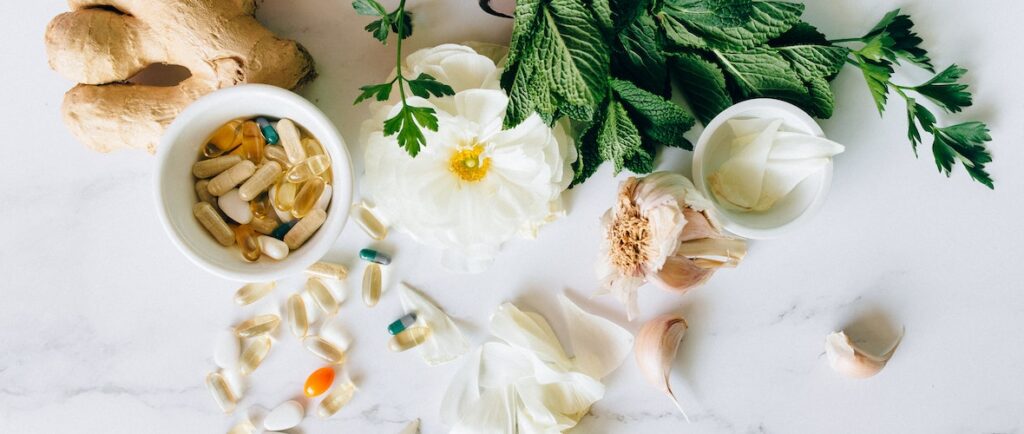Pain in the abdomen can be felt anywhere between the ribs and the pelvis. Tummy discomfort or stomach ache is another name for it. The stomach, liver, pancreas, small and large intestines, and reproductive organs are all located in the abdomen. In addition, the abdomen has significant blood arteries. All of these organs in the abdomen can be a source of stomach pain. However, there are many other causes of abdominal pain that are not due to organs within. Treatment of the pain is usually targeted to the organ affected.
While you are advised to contact your doctor whenever you have pain, you should know the following 5 remedies for emergency relief of pain. Some stomach discomfort resolves without the need for treatment of any form. Despite this, you need to know the following 5 home remedies for your abdominal pain since you may not know when you need them.
Bananas

Bananas are high in both water and fiber, which help with digestion and the regularity of bowel movements. One medium-sized banana contains around 10% of a person’s daily fiber requirements. Bananas are also high in Vitamin B6 and potassium, two nutrients that aid with digestion. Bananas can also help by acting as a natural antacid.
When patients have gastrointestinal issues like abdominal pain, nausea, or vomiting, many doctors recommend sticking to a BRAT diet. Bananas, rice, applesauce, and toast (BRAT) are the four main components of the BRAT diet. Water and electrolytes, such as potassium, are lost when you experience abdominal pain coupled with diarrhea. These nutrients are easily replaced with bananas. In those with inflammatory bowel disease, high-fiber diets can cause bloating and stomach cramps.
Lemonade

Lemonade is one of those homemade drinks that your family will appreciate throughout the year, but especially during the hot months. It is created with lemons, sugar, and water. Warm, fresh lemon juice can ease abdominal pain because of its components as well as the extra acidity which helps you to digest any food that is irritating you, and it also relieves gas.
Lemonade is simple to make. You basically just need three key ingredients:
1. Lemons: To get that excellent fresh-squeezed lemonade flavor, this recipe requires fresh lemons. To make 1-2 cups of lemon juice, you’ll need 6-8 medium-sized lemons, depending on their size.
2. White granulated sugar is dissolved in water to make a sweetening syrup
3. Water: The water you add depends on what sweetness you prefer
Lemons are high in vitamin C, fiber, and a variety of plant components that are helpful to health. These components have a variety of health benefits. In reality, lemons may help with heart health, anemia, kidney stone prevention, cancer prevention, and weight loss.
Lemons contain approximately 10 -12% carbohydrates, largely in the form of soluble fiber and simple sugars. The soluble fiber (pectin), has been linked to a number of health advantages. For instance, this soluble fiber can promote intestinal health and reduce sugar and carbohydrate digestion. To reap the maximum benefits of fiber from lemons, however, you must consume the pulp. When you drink lemonade, without the fiber found in the pulp, you may miss out on the benefits of the fiber.
Chamomile Tea

Chamomile tea has been used among some cultures as a herbal treatment for a variety of diseases for centuries. It is a popular herb and a mainstay in many homes. The most potent portion of the plant is its’ flower due to its high essential oil content. This ancient brew is especially effective in soothing abdominal pain. Its anti-inflammatory properties help your stomach muscles relax, which can reduce cramps and spasms pains.
Chamomile tea can also be used for insomnia, hay fever, rheumatic discomfort, rashes, lumbago, anxiety, weight reduction, anti-bacterial, and anti-allergenic purposes. For the management of abdomen pain, it is mainly used for stomach cramps, irritable bowel syndrome, indigestion, and colic. The herb has also been used to treat hemorrhoids and wounds, as well as cold and asthma symptoms with steam.
Chamomile does not have a defined dose. Daily doses of 900 to 1200 milligrams in capsule form have been used in studies. Tea is the most popular kind, with some people drinking one to four cups per day. Simply put a chamomile tea bag or chamomile flowers in boiling water in a mug covered with a saucer for 5 to 10 minutes to prepare chamomile tea. After it has cooled to the point where it is safe to drink, sip the herb, and enjoy the health benefits. Over-the-counter Chamomile mouthwash may aid in the reduction of mouth sores caused by cancer treatment.
Fresh Ginger

This adaptable plant can be ingested in a variety of ways, including drinks, tablets, and meals. Ginger has been reported to dramatically alleviate nausea and vomiting symptoms, as well as being a stomach-soothing relaxant.
The underground part of the stem is the part commonly used as a spice. It’s often called ginger root or, simply, ginger. Ginger can be used fresh, dried, powdered, or as an oil or juice. It’s a very common ingredient in recipes. It’s sometimes added to processed foods and cosmetics.
Although ginger is one of the most widely consumed spices in the world, not a great deal is known regarding its metabolism or metabolites. It is however known that it contains gingerol, which has powerful medicinal properties. It can treat many forms of nausea, especially morning sickness, May help with weight loss, osteoarthritis, lower blood sugars and improve heart disease risk factors as well as help treat chronic indigestion and abdominal pain.
While ginger-flavored or ginger-infused teabags are readily available in stores, you can create ginger tea from scratch at home using boiling water, sliced ginger root, fresh lemon juice, and honey for a healthy sense of sweetness.
Peppermint

Peppermint is a plant in the mint family. It has a high menthol content. Peppermint oil is used for a long-term disorder of the large intestines’ that causes stomach pain sometimes called irritable bowel syndrome. It is also used for indigestion, bowel spasms, cracked nipples, bedsores, and tension headaches. It’s also utilized for a variety of different ailments, but many of these have little scientific backing. It causes surface warmth, which soothes pain beneath the skin when administered to the skin. It may also reduce irritation by “cooling” the skin. Peppermint oil is used in cosmetics and soaps as a fragrance, as well as in medications as a flavoring component.
When to See a Doctor









